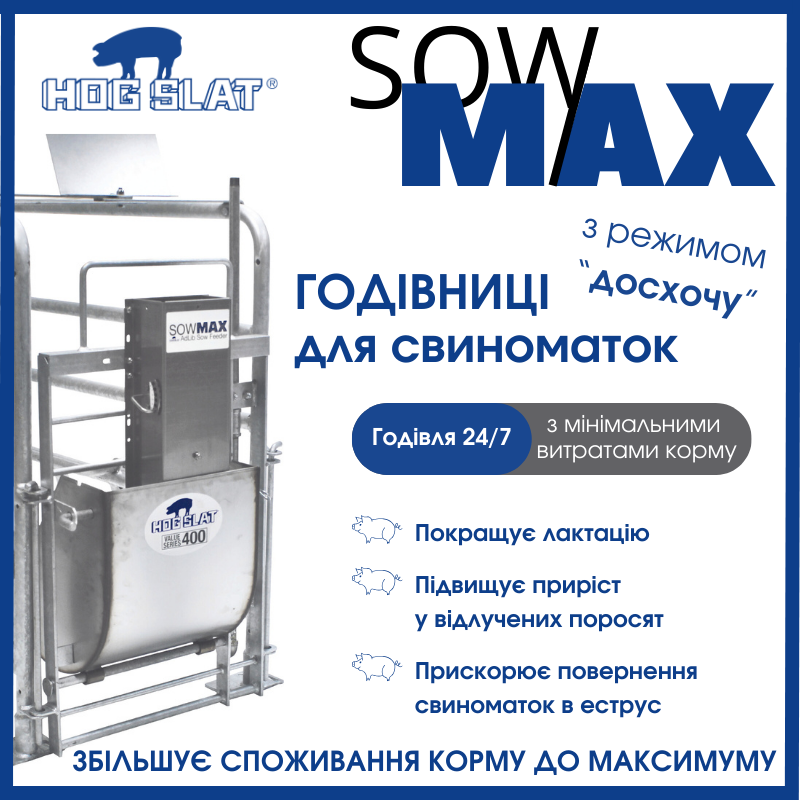Meat price index averaged 156.7 points in January, almost unchanged towards its revised value in December. A rise in quotations for bovine meat was counterbalanced by a fall for those of ovine meat and a small decrease for poultry and pork. In Australia, herd rebuilding constrained supplies of bovine meat for export and caused prices to climb. In the case of ovine meat, Oceania export prices dropped for the third month in a row, reflecting the seasonal slaughter peak and an associated boost in supply. Pig and poultry meat quotations also recorded their third month of decline, with a market characterized by generally abundant world supplies and stable demand.
 At the same time, domestic pork market in EU was characterized by volatility in January. Thus, the average price was comparable to December level or slightly gave way to it. At the end of the month, there has been some price recovery. It was caused by a limited supply of pigs mature for slaughter, as a result of a cold weather, which reduces animals’ weight gain. However, prices move in different directions in early February. For example, in Germany, Belgium and Austria prices didn't keep at the achieved level. Pork producers in France managed to gain a foothold and even slightly increase their quotations.
At the same time, domestic pork market in EU was characterized by volatility in January. Thus, the average price was comparable to December level or slightly gave way to it. At the end of the month, there has been some price recovery. It was caused by a limited supply of pigs mature for slaughter, as a result of a cold weather, which reduces animals’ weight gain. However, prices move in different directions in early February. For example, in Germany, Belgium and Austria prices didn't keep at the achieved level. Pork producers in France managed to gain a foothold and even slightly increase their quotations.
 Slight price weakening for live pigs was observed at the State of Sonora in Mexico. Thus, this year began with a mark of 28.6 Mexican pesos per kilo of pork in live weight but the price already dropped to 26.85 pesos in early February. This 6-percent fall in prices, experts associate with weakening of domestic demand, due to its seasonal fluctuations. Situation on the pork market was somewhat improved because of a slight recovery of the national currency in late January. As devaluation significantly increased the feed cost during the 2016.
Slight price weakening for live pigs was observed at the State of Sonora in Mexico. Thus, this year began with a mark of 28.6 Mexican pesos per kilo of pork in live weight but the price already dropped to 26.85 pesos in early February. This 6-percent fall in prices, experts associate with weakening of domestic demand, due to its seasonal fluctuations. Situation on the pork market was somewhat improved because of a slight recovery of the national currency in late January. As devaluation significantly increased the feed cost during the 2016.
 The Russian Federation was also affected by quotation decreasing. There, farmgate price has dropped by 14% or to 98 rub/kg for four weeks of 2017. Such a price index is higher than in the corresponding period of the last year. But in comparison to January, 2016 the fall was much more “gentle” and limited to 5% per month. According to the Federal State Statistics Service pig livestock increased by 4.6%, while pig production went on by more than 9%. That is why It should be expected that the domestic pork supply will be higher this year. However, the driving factor of its reduction is for sure ASF.
The Russian Federation was also affected by quotation decreasing. There, farmgate price has dropped by 14% or to 98 rub/kg for four weeks of 2017. Such a price index is higher than in the corresponding period of the last year. But in comparison to January, 2016 the fall was much more “gentle” and limited to 5% per month. According to the Federal State Statistics Service pig livestock increased by 4.6%, while pig production went on by more than 9%. That is why It should be expected that the domestic pork supply will be higher this year. However, the driving factor of its reduction is for sure ASF.
 In January, Chinese purchase index for live pigs slightly rose compared to a month earlier. So, just for two decades, quotations have added 4% in national currency as well as in dollar terms. At this time, pork appreciation was forced mainly by a Chinese New Year.
In January, Chinese purchase index for live pigs slightly rose compared to a month earlier. So, just for two decades, quotations have added 4% in national currency as well as in dollar terms. At this time, pork appreciation was forced mainly by a Chinese New Year.
![]()
![]() US and Canada pork also rose in price. At the end of January in these countries pigs mature for slaughter price reached 1.42 USD and 1.24 USA/kg in Canada, respectively under the influence of pretty vibrant demand. It is higher by 20 cents / kg than in the first days of this year and by 11% and 15.5% respectively greater than in the same period last year. Considering the results of the first week of February, the upward movement of prices will continue. In this case US pork will be gradually aligned to the price in certain EU countries. As a consequence of that, most producers finally came out of the "red" losses zone, which predominated in the autumn period.
US and Canada pork also rose in price. At the end of January in these countries pigs mature for slaughter price reached 1.42 USD and 1.24 USA/kg in Canada, respectively under the influence of pretty vibrant demand. It is higher by 20 cents / kg than in the first days of this year and by 11% and 15.5% respectively greater than in the same period last year. Considering the results of the first week of February, the upward movement of prices will continue. In this case US pork will be gradually aligned to the price in certain EU countries. As a consequence of that, most producers finally came out of the "red" losses zone, which predominated in the autumn period.
Analytical Department of the Association of Ukrainian Pig Breeders on the FAO submissions.
Association of Ukrainian Pig Breeders — is a non-profit, voluntary organization. Established in July 14-th, 2011. At present, AUPB unites 35 farms, breeding stock of which amounts to 35% of the national volume. The main objective of the Association is to protect rights and interests of pig enterprises, achieve international standards of production due to implementation of modern technologies.



